| "Descrizione" by AColumn (9336 pt) | 2022-Feb-27 19:08 |
Review Consensus: 10 Rating: 10 Number of users: 1
| Evaluation | N. Experts | Evaluation | N. Experts |
|---|---|---|---|
| 1 | 6 | ||
| 2 | 7 | ||
| 3 | 8 | ||
| 4 | 9 | ||
| 5 | 10 |
Proanthocyanidins, also known as condensed tannins, are important plant secondary metabolites, bioactive phytochemicals synthesised via the flavonoid pathway that contribute to human and animal health and plant survival by performing anti-inflammatory, antioxidant functions against pathogens and other diseases. They can bind to proteins.
In nature they are found in fruit, bark, leaves and seeds of plants (Cinnamonum verum, Heisteria acuminata), protecting them against predators.
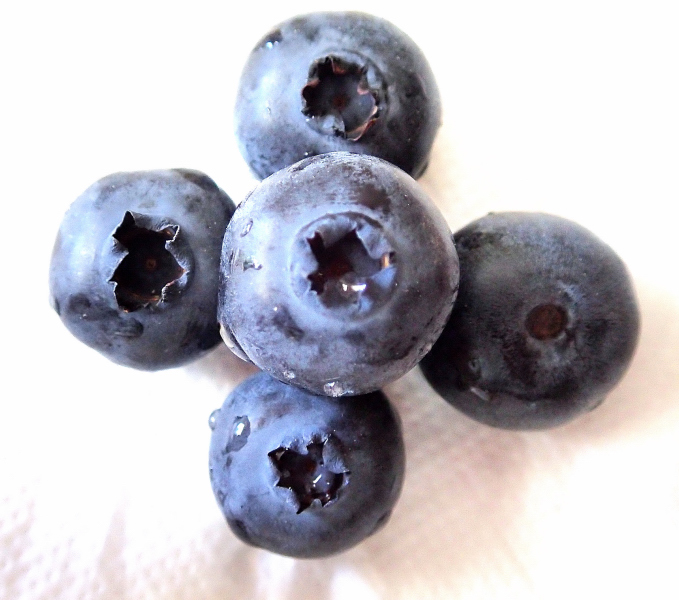
Industrially, Proanthocyanidin comes in the form of a fine reddish-brown powder.
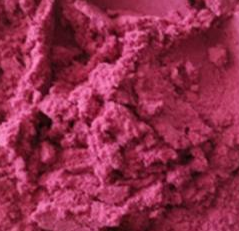
What they are used for and where
In food and are used to determine astringency and flavour in fruit juices, wines, teas.
Medical
Obesity, which has increased dramatically in recent years, is linked to various diseases such as type 2 diabetes mellitus, stroke, cancer, hypertension and hyperlipidaemia. Among the various remedies that scientific research has been able to develop to combat and reduce this chronic metabolic disease that is becoming endemic in the most industrialised countries, grape seed proanthocyanidin extract has shown an anti-obesity effect. This extract can reduce fat deposition, improve lipid metabolism and insulin resistance (1).
Proanthocyanidins and polyphenols have drawn research attention to the wine consumption of the French population, which has a low incidence of coronary heart disease. This study summarises the literature on proanthocyanidins with a focus on their chemical structure, occurrence, daily intake from food, bioavailability and metabolism, and evidence of a protective effect against cardiovascular disease (2).
In this other study, it is noted that the efficacy of Proanthocyanidins contained in blueberry products is directly linked to the amount of Proanthocyanidins which should exceed at least 2 grams to demonstrate efficacy against urinary tract infections (3).
Typical commercial product characteristics Proanthocyanidin
| Appearance | Fine reddish-brown powder |
| Loss on Drying | ≤4.0% |
| Residue on Ignition | ≤3.0% |
| Heavy Metal | ≤10ppm |
| Arsenic | ≤2ppm |
| Lead | ≤2ppm |
| Residual Pesticide | ≤1ppm |
| Total microbacterial count | <1000CFU/g |
| Yeast & Mold | <100CFU/g |
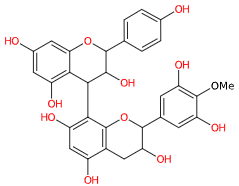 |  |
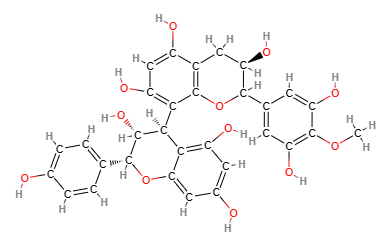 | 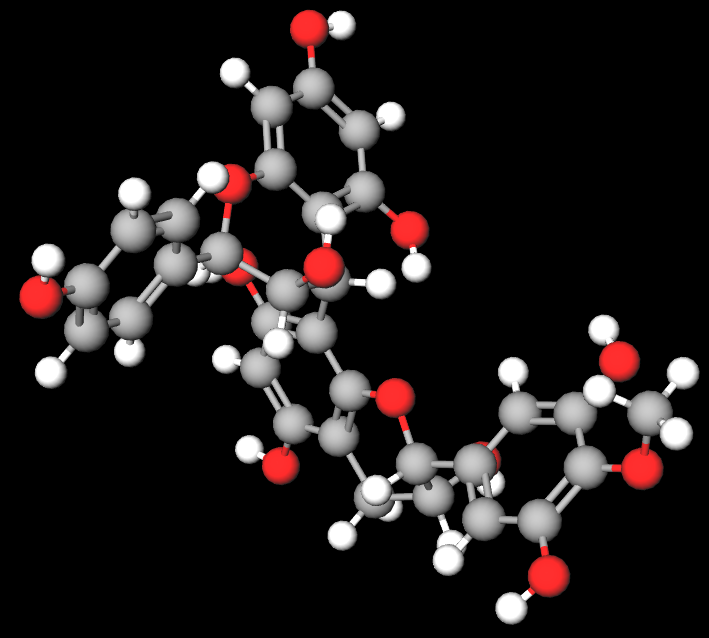 |
- Molecular Formula C31H28O12
- Molecular Weight 592.5
- CAS 18206-61-6
- UNII
- EC Number 605-956-8
- DSSTox Substance ID DTXSID10274250
- IUPAC (3R)-2-(3,5-dihydroxy-4-methoxyphenyl)-8-[(2R,3R,4R)-3,5,7-trihydroxy-2-(4-hydroxyphenyl)-3,4-dihydro-2H-chromen-4-yl]-3,4-dihydro-2H-chromene-3,5,7-triol
- InChI=1S/C31H28O12/c1-41-31-20(37)6-13(7-21(31)38)28-22(39)10-16-17(34)11-19(36)25(30(16)43-28)26-24-18(35)8-15(33)9-23(24)42-29(27(26)40)12-2-4-14(32)5-3-12/h2-9,11,22,26-29,32-40H,10H2,1H3/t22-,26-,27-,28?,29-/m1/s1
- InChl Key JPFCOVZKLAXXOE-XBNSMERZSA-N
- SMILES COC1=C(C=C(C=C1O)C2C(CC3=C(O2)C(=C(C=C3O)O)C4C(C(OC5=CC(=CC(=C45)O)O)C6=CC=C(C=C6)O)O)O)O
- MDL number
- PubChem Substance ID
Synonyms:
- Polyhydroxyflavan-3-ol
- Ouratea proanthocyanidin A
- Zangrado
References_______________________________________________________________________
(1) Liu M, Yun P, Hu Y, Yang J, Khadka RB, Peng X. Effects of Grape Seed Proanthocyanidin Extract on Obesity. Obes Facts. 2020;13(2):279-291. doi: 10.1159/000502235.
(2) Rasmussen SE, Frederiksen H, Struntze Krogholm K, Poulsen L. Dietary proanthocyanidins: occurrence, dietary intake, bioavailability, and protection against cardiovascular disease. Mol Nutr Food Res. 2005 Feb;49(2):159-74. doi: 10.1002/mnfr.200400082.
(3) Asma B, Vicky L, Stephanie D, Yves D, Amy H, Sylvie D. Standardised high dose versus low dose cranberry Proanthocyanidin extracts for the prevention of recurrent urinary tract infection in healthy women [PACCANN]: a double blind randomised controlled trial protocol. BMC Urol. 2018 May 2;18(1):29. doi: 10.1186/s12894-018-0342-7.
| Evaluate |

